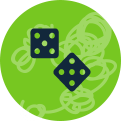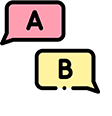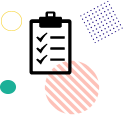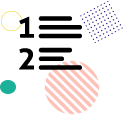Learn the latest trends indrive business innovation with the Oxford Fintech Programe
Learn the latest trends indrive business innovation with the Oxford Fintech Programe


Learning involves connecting, strengthening, and extending sets of neural links in Long-term Memory in the neocortex (Hebbian Learning).
There are many types of memory with different purposes:
1. Information in working memory (can fade away in seconds)
2. Information in long-term memory sometimes lasting (with subtle and not-so-subtle shifts) for a lifetime
An average working memory can hold up to four “ideas” of information at a time before they begin slipping from the mind.
Students will often place information in working memory and mistakenly believe it has made its way into long-term memory.
Retrieval practice encourages and strengthens the connections and prevents students’ working memory from tricking them.

Information in working memory is limited; too many pieces of information at once, and the mind can be overwhelmed. The neutral links of long-term memory can activate and extend working memory.
Within any one classroom, there is a great deal of variability in working memory capacity among students (resulting in differences in learning speed).
Breaking information and activities into smaller conceptual parts will combat too-heavy demands on students’ working memory.

A commonly understood definition of active learning is that it engages students in the process of learning through activities and/or discussion in class and a form of retrieval practice afterwards. Active learning emphasises higher order thinking and often involves partner and/or group work. Active learning supports the creation and consolidation of neural links in longer-term memory that underlie both a rudimentary and a higher order conceptual understanding of the material.

Procrastination is one of students’ top challenges. Giving students concrete tools to tackle it is of vital importance. When you think about something you don’t like/want to do, it can cause feelings of pain that it encourages you to think about something different; the result is procrastination. The older a student is, the more ingrained a procrastination habit can become, and that harder it can be to change. Dr Oakley – one of the authors – advises students to work (focused state) until they become frustrated, then take a break (diffuse state). Alternating between modes as necessary helps students make progress and reduces anxiety.

Biologically primary material (easy stuff) involves information our brains are naturally wired to learn. This includes abilities like recognising faces and learning how to speak a native language. Biologically secondary material (hard stuff), on the other hand, includes abilities like math and reading. To learn these materials, our brains must rewire in ways they have not had to do in the previous eras of human evolution. Secondary material is challenging to learn because a students’ working memory is limited. Evidence indicates that direct instruction – instruction that offers guided, scaffolded, and active learning – is more suitable for secondary material.

There are two major pathways the brain uses to store information in long-term memory: declarative and procedural. The declarative pathway is mostly conscious and fast to learn and store information. The procedural pathway is non-conscious and slow to learn and store information Once information is learned, the procedural system can put it to use much more rapidly than the declarative system.
It is important, wherever possible, to ensure that students are acquiring information through both the declarative and the procedural systems – this makes them flexible, adaptable, and fast-problem solvers. What does this have to do with LILI?
1. The explanations and demonstrations teachers provide to students during the “I Do” (Link It) stage enhance their declarative learning
2. When that instruction is followed up with practice “We Do”, students begin to activate their procedural pathway – this helps automate learning

Use direct instruction to teach procedures for everyday tasks such as entering a classroom or asking for help.
1. Show and tell students what you desire (“I Do”)
2. Practice with students what you desire – and provide praise as warranted (“We Do”)
3. Demonstrate mastery of the behaviour until it becomes a habit (“You Do”)
Procedures need to be taught from the first day, then reinforced and retaught as necessary.
Consistency is paramount. When students learn to respond habitually, they will quickly follow the procedure without even having to think about it.

Chronic stress can have serious long-term consequences on health. Moderate transient stress, on the other hand, may improve the ability to learn and can improve cognition, working memory and physical strength. It helps to plan group work with the following characteristics in mind: positive interdependence, individual accountability, face-to-face interaction, social skills, and group processing.